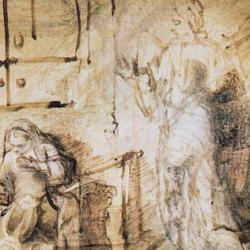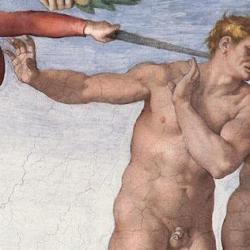According to Paul, all human beings lived under the “elementary principles” ( stoicheia ) until the coming of the Son and Spirit. As he elaborates on this theme in Galatians 4 and Colossians 2, he identifies several features of stoicheic life:
1. Stoicheic life is the life of a son in his minority, the life of a son who is treated as no better than a slave.
2. Stoicheic life involves submission to beings that are not god.
3. Stoicheic life involves “taste not, touch not” restrictions, as well as adherence to the heavenly lights to mark signs and seasons.
4. #1 implies that stoicheic life is temporary. When the son reaches majority (in the Son), he is no longer under guardians and managers.
How does this description of stoicheic life compare to the life of Adam in Eden? Did the prefall covenant with Adam take a stoicheic form? I think so. But then, what difference does the fall make? Here is my provisional formulation of things:
1. Adam was already under a “taste not” restriction at creation, already under angels (Psalm 8). He was created as son, but given a slave’s task in the garden, not ruling the garden of his Father but tending it.
2. In the first covenant, the stoicheic restriction was strictly a matter of immaturity. He wasn’t ready yet. He wasn’t defiled, just not mature.
3. With the fall, the stoicheic order gets elaborated in several respects: a) “taste not” is extended to the tree of life; b) the garden becomes “holy space,” off limits, which obviously is not what it was before; c) death enters, in all the forms that the curse in Genesis 3 elaborates, so there is death spreading. This is later elaborated in the rules of impurity in Leviticus 12-15.
4. This last means that there is a variation on stoicheic restrictions after the fall: Before, “taste not” was strictly about maturity, but now it’s both about maturity (Torah as schoolmaster) and about exclusion of death-filled men from God’s presence.
5. This means that there is a sense in which the Mosaic covenant was an extension of the Adamic covenants. It was an extension of stoicheic life in a world under the dominion of Sin and Death.
6. Jesus’ death and the gift of the Spirit ended stoicheic order, at least for those who are in Christ. His death must have dealt with both aspects of postfall stoicheic order: He died and rose again to transfer men from deathliness (flesh) to Spirit and to bring sons to majority and glory.
Thanks for several friends whose comments helped me sort through this.















